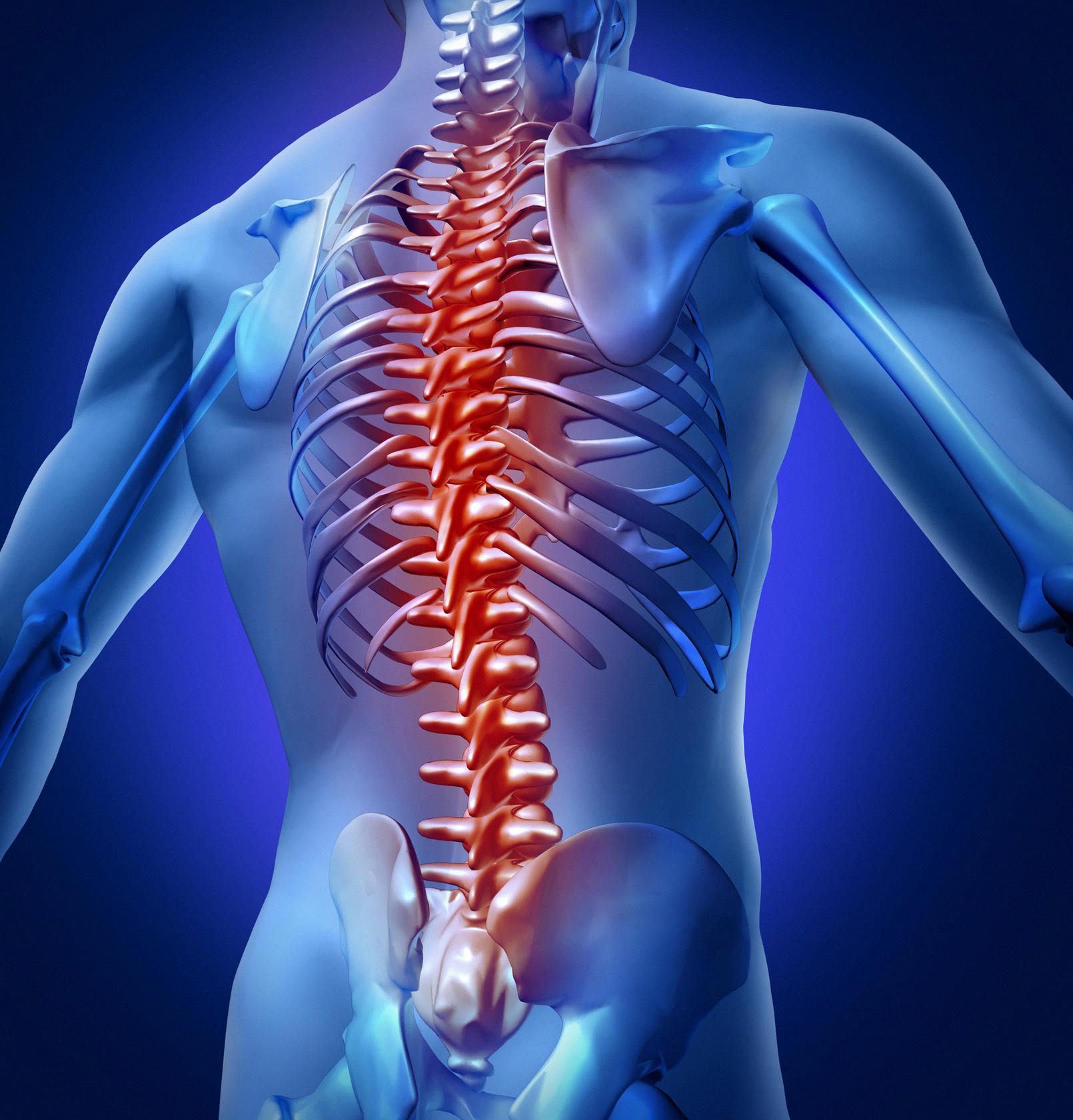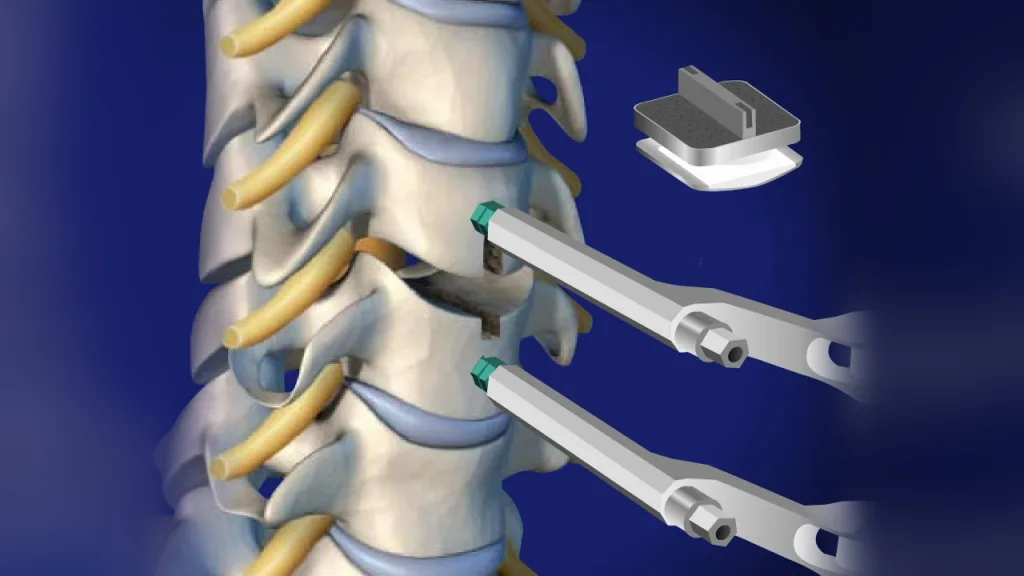Spine is one of the most important parts of your body. It is a column of bones, muscles, and connective tissue that runs from your head to your pelvis and supports your body’s weight. Not only does it provide support to your body, but it also allows you to move freely and bend with flexibility. Your spine consists of 24 vertebrae that are stacked on top of each other in a column. Each vertebra has its own unique shape and size which help it fulfill its role in the structure of the spine.
The spine also contains the spinal cord which is connected to the brain by nerve pathways and is responsible for transmitting messages betwen the brain and the rest of the body. This makes up an intricate network that controls our movements, senses, and mental activities like thought processes. In addition, our spine houses nerves which branch off from the spinal cord throughout our bodies allowing us to feel sensations such as pain or temperature changes.
Given all these vital roles, it’s easy to see why injuries or damage to our spines can be so devastating. Unfortunately, adult nerve cells in the spinal cord don’t regrow after damage making recovery difficult or even impossible in some cases. Research into why they don’t regrow and how they might be encouraged to do so continues today as scientists seek new treatments for paralysis caused by spinal cord injury.
The answer to whether or not we can live without a spine is unfortunately no; we cannot survive without one as it is essential for our day-to-day functioning and overall health. Damage to our spines can lead to devastating consequences including paralysis so it’s important we do all we can to keep them healthy both through regular exercise and avoiding risky activities that could cause unnecessary harm.
Consequences of Having No Spine
If you have no spine, it would be extremely difficult to move and support your body. Without a spine, your body would be in a constant state of collapse. You would not be able to stand up or even sit up wthout assistance, and walking would be impossible. Even if you were lying down, your muscles and joints would lack the necessary stability for efficient movement. Your internal organs would also press against each other due to the lack of support from the spine, resulting in difficulty breathing. In addition, the nerves running through your vertebrae wouldn’t have a clear path and could become damaged, leading to paralysis below the point of injury. Ultimately without a spine, you would be unable to survive on your own and need extensive medical care in order to live.

Source: iowafamilychiropractic.com
The Impact of Not Having a Spine
Those who lack courage or are cowardly can be said to have no spine. People with no spine may be unwilling to take risks, stand up for themselves, or speak out against injustice. They may also be overly reliant on others for guidance and direction, lacking the confidence to make their own decisions. In short, those who have no spine are characterized by a lack of strength and courage in the face of danger or difficulty.
The Possibility of Spinal Regeneration
Unfortunately, no. Spinal cord nerve cells don’t typically regrow afer damage, due to the complexity of the central nervous system and its lack of regenerative properties. Researchers have been working to identify methods that could encourage regrowth of spinal cord nerves, but it remains a difficult challenge.
The axons of the nervous system require a great deal of energy to regrow, and the spinal cord is particularly complex and delicate due to its dense network of neurons and white matter tracts. Additionally, the environment around the damaged nerves can be toxic, making it difficult for them to survive and regenerate. Finally, scar tissue can form around damaged axons, which further impedes their ability to reform connections.
Although there is hope for potential treatments that could potentially regenerate spinal cord nerve cells in future, for now there is no definitive method for encouraging regeneration after damage has occurred.
Living Without a Spinal Cord
No, you cannot live without your spinal cord. The spinal cord is an essential part of the human body that carries messages between the brain and the rest of the body. It is composed of nerves and nerve fibers, which are responsible for controlling movement, sensation, and autonomic functions like breathing and digestion. Damage to the spinal cord can lead to paralysis or loss of feeling in parts of the body below the injury site. In extreme cases, complete severance of the spinal cord can lead to death.
Replacing a Human Spine
Yes, it is possible to replace a human spine. This procedure is called spinal fusion or vertebral interbody fusion. It involves replacing a severely diseased or damaged vertebra with an artificial device designed to restore the spine’s proper height and alignment. During the operation, bone grafts are inserted beween the two adjacent vertebrae and held in place with metal rods, screws, plates, or cages. The graft material may be autograft (taken from the patient’s own body) or allograft (taken from a donor). This surgical procedure can reduce pain by eliminating pressure on the spinal cord or nerve roots in the thoracic or lumbar spine. In some cases, it can also improve mobility and stability of the spine.

The Impact of Spinal Injuries on Women
No, there is not a girl without a spine. The spine is the backbone of the human body and its role is incredibly important. It provides structural support to the body and allows us to move in a variety of ways. It also houses the spinal cord, which is responsible for transferring nerve signals from the brain to all parts of the body. Without a spine, it would be impossible for us to move or even survive. While some people may appear to have more flexible spines than others, they still have spines and can bend in certain ways due to their bodies’ natural flexibility, muscle control, and/or training. Sofie Dossi is an example of someone with an extraordinary amount of flexibility that’s likely due to her intense training in contortionism and acrobatics, but she still has a spine just like everyone else!
The Impact of Living Without a Spine
Living without a spine is not possible, as the spine is essential for providing structure and support to the body. Without it, breathing and other vital functions could not be maintained. In cases of spinal cord injury or spina bifida, life expectancy can be significantly affected. Depending on the severity of the injury or condition, individuals may experience loss of movement or sensation in some areas of the body and in severe cases, may rely on medical intervention to survive. In some instances, life expectancy may be shortened; however, with approriate medical treatment and rehabilitation, many individuals are able to lead full lives with their condition.
Living with a Broken Spine
Yes, it is possible to live with a broken spine. Depending on the severity of the break, treatment may vary from immobilization and pain management to surgery. In some cases, a person may be able to make a full recovery with or without surgery and return to regular activities. In more severe cases, however, a person may need ongoing care and treatment for thir injury. Rehabilitation can help improve strength, flexibility, and mobility in those who have suffered a spinal fracture. With proper care and treatment, most people are able to heal from a broken spine and lead healthy, productive lives.
The Inability to Repair Spinal Cord Damage
The spinal cord is a complex network of nerve cells, and any damage to this delicate structure can have devastating effects on the body’s ability to process and transmit signals. Unfortunately, due to the intricate nature of the spinal cord, it is difficult for the human body to repair itself when the spinal cord is damaged. This is because nerve cells, which are responsible for transmitting signals back and forth between different parts of the body, do not regenerate or repair themselves. When these cells are damaged, scar tissue forms around them and blocks any regrowth or healing from taking place. Additionally, there are crtain molecules within the nerves that can interfere with the regrowth of long nerve fibers. As a result, it is almost impossible for a damaged spinal cord to heal itself without outside intervention such as surgery or stem cell therapy.

Age of Full Spinal Growth
The spine is considered to be fully grown by the time a person reaches adulthood, typically around 18-21 years of age. As mentioned previously, the neurocentral synchondrosis fuses around age nine and the spinal canal has already reached 95% of its definitive size by age five. However, even aftr this point in time, the spine continues to grow and develop until full maturity is reached. During this period of growth, the vertebrae become stronger and thicker; the intervertebral discs increase in thickness and height; and ligaments surrounding the spine continue to thicken and strengthen. This process of growth and development is necessary for providing support for the body’s weight, allowing us to stand upright, move freely, and protect our internal organs from injury.
Can Spinal Injuries Heal on Their Own?
Yes, the spine can heal itself in many cases. The body has an amazing capacity for self-repair and is able to naturally heal injuries and conditions of the spine. In some cases, a herniated disc may heal on its own within six months with over-the-counter pain relief and limiting activities that cause pain or discomfort. In more serious cases, however, surgery may be needed to correct the problem. In addition, physical therapy and exercise can help to strengthen the muscles around the spine and provide additional support to prevent future injuries.
Can the Brain Function without the Spine?
No, the brain cannot function without the spine. The spinal cord is essential for communication between the brain and the rest of the body. It carries signals from the brain to the body’s organs, muscles, and glands, allowing them to respond and execute commands. Without a functioning spinal cord, messages from the brain cannot reach other parts of the body, leading to paralysis. Additionally, since nerve cells in the spinal cord also help regulate reflexes automatically without input from higher brain centers, these reflexes will be impaired or even absent without a healthy spinal cord.
Conclusion
In conclusion, the spine is one of the most important parts of the body. It not only gives us structure and support, but it also allows us to move freely and bend with flexibility. Without it, we woud not be able to stand upright or even move about. The spine is made up of vertebrae, the spinal cord and associated nerves. Unfortunately, adult nerve cells in the spinal cord do not regrow after damage due to a lack of energy required for regeneration. Thus, it is extremely important to take care of our spines and keep them healthy in order to ensure our overall health and functioning.
